#desert greening
Photo

~ Desert Tones ~
4K notes
·
View notes
Text
Global Greening and Trillion Trees Initiative for better reforestation and regreening of planet Earth
This article deals with the most important processes for all life and the biosphere on planet Earth - the global greening process and urban greening.
It is written in English and in a very simple language to make it easier to understand. The article and very important paper will be translated also into other languages to explain and understand some things even better. First we will look at the concept and terms, later different functions, meanings, possibilities and potentials.
Global Greening and Regreening is the process of restoring natural ecosystems and increasing green spaces on our planet. This includes reforestation or afforestation, expanding vegetation in cities, and other measures to increase green space in rural areas. Global greening is important for a number of reasons, including because it creates habitat for wildlife, reduces air and water pollution, and mitigates the effects of climate change. It also provides an important source of food, fuel, and other essential resources for many people around the world. There is man-made greening and natural greening. Everyone can make up their own mind about it - but read more to understand bad, good and other sides or aspects. Today many talk much about 'green things', but green is not always green, most people should finally understand, because if we talk about green we mean mostly nature, environmental friendly things or just green colours – but nature is not just green and blue like most of the 'experts' and media say or write. It is much more and to bring some colors and diversity into these topics Greening Deserts became a new logo and works in diverse areas. The Global Greening and Trillion Trees Initiative shows also many aspects of nature and our colorful planet. Now read more why it is so important to understand how the worldwide greening process affects all life on Earth and what we all can do better.
Global greening is an important part of creating a better and greener future on planet Earth along with all life forms. To re-green and reforest the biosphere, nature is our greatest ally, everyone else who thinks they or their partners are or have "the solution" are lying. You can read here the best, only and really true solution - nature and many will prove it to you, as so many times before. Read more now about how the Global Greening organization began as a private and collaborative project, how it became a worldwide movement and finally an institution.
The Global Greening Project and future organization was founded many years ago as the main project of the Greening Deserts and Trillion Trees Initiative. The founder published many articles, innovative ideas and papers about the regreening and reforestation movement. GlobalGreening.org is and will be the main platform in the future, also for the development organization. The project is linked to Greening Deserts developments such as the global Greening Camps. It has long been a private initiative as part of the Trillion Trees Project. The Global Greening Institution wants to build an additional platform for Southern Europe and Africa, including the Drought Research Institute with its online platform DroughtResearch.com. With real active and financial support, the Global Greening Institute will also build a real building with the first nations that will really support us this year and have supported us in the first days - the Greening Campus and Institute can be built at any major Greening Camp still in the first year! All the organizations that have supported us financially will also be the main partners or sponsors, depending on the form and amount of support they have provided. They will make world history (or not) and some have even already made it, because historical archives, libraries and universities have stored a lot of background and information sent to them.

Global greening efforts can be undertaken by businesses, governments and individuals in many countries. It is a continuous work and long-term investment that can have positive effects on both, our economy and environment. With the right plans and policies in place, global greening efforts can help to reduce poverty, improve public health and create a more equitable world for everyone – it even can accelerate the global cooling and peace process. Governments can invest in real sustainable reforestation projects and green initiatives to help to reduce man-made climate change impacts and provide healthier environments or habitats for their citizens and also all other humans worldwide. Businesses who do or support global greening solutions and invest in green technologies, renewable energy sources, cleantech or greentech can reduce the carbon footprint or emissions, pollution and increase their sustainability. Individuals can also taking part by planting trees, reducing energy consumption, much waste and start advocating for greener or more sustainable solutions.
Global greening is one of the most important goals and tasks of humanity that can be achieved through a combination of cultural, individual, regional, societal and international efforts. Global greening is also global cooling and promotes or supports peacebuilding and peacekeeping. People in a healthier and greener environment are more peaceful and healthy. Together we humans can restore our natural ecosystems, reduce negative climate change effects or harmful man-made influences on nature and create a better future for us and planet Earth. There are a number of general and potential solutions for global greening like explained in this article. Most of them can be implemented at a local, regional, national and global level. Read also more on our project and network pages to understand the complexity and connections.
Before continuing with the main topics of the article, the Global Greening and Trillion Trees Initiative initiators are proud to announce some really great news! We have planned tree planting campaigns for 58 billion trees in North, East and West Africa - many tree species should be African, native or indigenous and endangered species, we hope international experts will also help us with this. Some countries where greening camps were started years ago will of course be included, such as Algeria, Ghana, Kenya, Rwanda, Tanzania and Uganda - of course, only if the governments allow and support it. Responsible people of all affected regions will be included, informed and asked for support at the right time, especially before tree planting activities will begin. They can also contact us through the official channels and pages.
Another good news is that we plan tree planting actions, campaigns and greening camps for 42 billion native Australian trees like the methane composting or storage trees. More tree species will be planted of course, not just in Australia but also in South Asia. The MethaneStorage and WetForest.org projects are also part of the global greening process and to establish more healthier and resilent ecosystems who can store and transform more greenhouse gases! More wet forests and wetlands with trees are essential to reduce warming of forests and wetlands, to prevent dry forest soils and methane storage capacities. Check Greening Deserts articles and posts or tweets of the Trillion Trees Initiative and @TrillionTreesEU, too. Understand why global greening is so important for all life on planet Earth and what vertical farming and urban greening can do to improve global greening efforts.
For more diverse trees and plants in northern regions we plan to cultivate and share also many species of marshlands, moor-, swamp- and wetlands. The focus is on wet forests but also on woods and many single trees in tundra landscapes. The plan is to plant up to 100 billion trees in taiga and tundra regions, it will also help to cool down the regions, prevent permafrost thawing and higher methane releases! It is a mammoth task and one of the largest actions. Each day counts and we hope the northern nations will support us fast as possible to build the first greening and ecosystem restoration camps there.

Global Greening is a term used to describe the process of increasing vegetation cover and plant growth across the planet. One of the main causes of global greening is the rising levels of carbon dioxide in the atmosphere due to human activities such as the burning of fossil fuels. Carbon dioxide is an important nutrient for plants, and higher concentrations in the atmosphere have led to increased growth and expansion of forests and vegetation around the world. Despite the positive effects of global greening, deforestation remains a significant problem, particularly in regions such as the Amazon rainforest and Indonesia, where large areas of forest are being cleared for agriculture, mining and other forms of industrial or problematic developments. Deforestation has serious environmental consequences, leading to biodiversity loss, increased carbon and methane emissions, soil erosion and land degradation. The opposite of Global Greening is Global Browning, a process that is unfortunately increasing rapidly every year. As many ecosystems reaching their limits, the greening effect continues to decreasing and land degradation and desertification are rapidly increasing. Since many years Greening Deserts has been educating people about such problems and offering innovative solutions.
Vertical Farming is an innovative agricultural technique that involves growing crops in vertically stacked layers using artificial light and controlled environmental conditions. Vertical farms can be set up in urban areas and can produce high volumes of crops and trees without requiring large amounts of land or water. Vertical farming can contribute to global greening and reforestation in several ways. First, it can help reduce pressure on natural forests and ecosystems by providing an alternative source of food and resources. Second, it can increase overall vegetation in urban areas, which can help mitigate the effects of urban heat islands and provide a number of other benefits, such as improved air quality and reduced noise pollution. Vertical farming is the future of efficient and sustainable agriculture for urban areas. It can help combat climate change by reducing the carbon footprint and harmful impacts of conventional agriculture. By growing crops locally and using energy-efficient technologies, vertical farming can significantly reduce the carbon emissions associated with transporting food long distances and producing it using conventional farming methods. By using urban land such as rooftops and walls for agriculture, cities can increase their food security while reducing their carbon emissions. For example, rooftop gardens and urban greenhouses can provide fresh produce to local communities, reduce the urban heat island effect, and capture rainwater that can be used to irrigate crops.
Many of these reasons were also a factor why Greening Deserts has been developing concepts and projects like the Urban Greening Camp for years. Innovative methods and techniques have been further developed as well as interesting Vertical Farming developments have been shared with the society - also regionally and internationally. Since 2016, three advanced types of greening facilities have been developed, the main facilities are Greening Camps for land sites with agroforestry, agrovoltaics, greenhouses and nursery. Rainwater or seawater treatment plants, solar and wind energy will provide the needed energy - more energy can be stored in energy storage parks and converted to hydrogen. The second type is a model urban greening facility, the concept of Urban Greening facility includes extended Vertical Farming concepts, Cleantech and Greentech developments and in principle can be established in any major city as a specialized nursery for city and people. These concepts are unique and have been published several times by Greening Deserts founders on different networks and sites!
The vision is that all major regions affected by deforestation, desertification, and land degradation can use these camps to do reforestation, regreening or revegetation, soil improvement and freshwater harvesting faster and more efficiently than any other solution ever. Copying the concepts only confirms that Greening Deserts' developments work. The best thing would be to ask and involve the founder, together we can improve and develop Greening Camps much further, even to the Moon and Mars - just kidding, but the reality is that the world could use thousands of such facilities to really reduce and then stop man-made desertification and land degradation! We must ask ourselves why officials and responsible people or organizations who know this since years still do not support Greening Deserts? This ignorance is not only killing the environment and many life forms every year, it will destroy all humanity! Time is running out, every day counts.
Here come some more important points about why urban greening and global greening are so important to all of us - and why they are the only big, comprehensive or realistic global solution to urban greening, global greening and cooling. The article is written in a very simple language that even children can understand.
Urban greening, ecological forestry, and sustainable cropping solutions such as agroforestry and regenerative agriculture are important components of global greening efforts. These approaches can help increase vegetation cover, restore degraded ecosystems, and mitigate the effects of climate change. Urban greening refers to increasing vegetation cover in urban areas. This includes planting trees, creating green spaces, and using green roofs and walls. Urban greening has several benefits such as improving air quality, reducing the heat island effect, and increasing biodiversity. Urban greening can provide a source of food and other resources, which can help reduce pressure on natural ecosystems. It has a positive impact on biodiversity and provides more healthy habitats for people and a variety of animal and plant species - similar to the concept of allotment gardens developed in Leipzig. All of these measures help create more green spaces that can provide important habitat for many native species, especially insects and pollinators such as bees, butterflies and wasps.
Ecological forestry or ecoforestry, is an approach to forest management that aims to balance environmental, social, and economic goals. Ecoforestry focuses on preserving natural ecosystems, using sustainable harvesting techniques, and involving local communities in forest management. Ecoforestry can help maintain and restore forest ecosystems that are critical for carbon sequestration, biodiversity, and the provision of ecosystem services.
Agroforestry is an agricultural technique that combines growing trees with cropping or raising livestock. This approach can help increase soil fertility, reduce erosion, and provide farmers with a source of income. By planting trees in and around cropland, farmers can improve soil health by increasing soil organic matter and improving soil water-holding capacity. Trees can also provide shade and windbreaks for crops, which can lead to reduced water use and increased crop yields. Agroforestry can also contribute to global greening by increasing vegetation cover and restoring degraded lands. Agroforestry and regenerative agriculture can also help improve the health and resilience of soil ecosystems. Through the use of crop rotations, cover crops, and natural fertilizers, these approaches can improve soil fertility and reduce the need for synthetic fertilizers and pesticides. This can help reduce the environmental impact of agriculture and promote the long-term sustainability of food production.
Regenerative agriculture is an agricultural approach that focuses on restoring soil health and using sustainable agricultural practices. Regenerative agriculture can help increase soil carbon sequestration, reduce greenhouse gas emissions, and improve biodiversity. This approach can also contribute to global greening by increasing vegetation cover and restoring degraded lands. One of the most important benefits of regenerative agriculture is its potential to sequester large amounts of carbon in the soil. Carbon sequestration refers to the process of taking up and storing carbon from the atmosphere in plants and soils. By increasing the amount of organic matter in the soil, regenerative agriculture can help store large amounts of carbon, which in turn can mitigate the effects of climate change. Together with agroforestry and vertical farming, these are the best sustainable farming practices that can contribute greatly to global greening, healing and re-greening.
Another important factor to consider in global greening efforts is the role of technologies. Advances in technology have the potential to significantly improve sustainable land use practices, including urban greening, ecological forestry, agroforestry, and regenerative agriculture. For example, precision agriculture technologies can be used to optimize crop yields while reducing fertilizer and water use, promoting sustainable land use practices. Similarly, remote sensing technologies can be used to monitor and map changes in forest cover and land use, providing valuable information for forest management and conservation. It is important to recognize that the use of some technologies in global greening efforts should be approached with caution. While some of the technologies have the potential to improve sustainable land use practices, they can also have negative impacts on the environment and society. For example, the use of genetically modified crops can lead to the loss of genetic diversity and the emergence of new pests and diseases. The use of technology in global greening and green developments, honest climate and environmental protection should be led by really good experts and responsible scientists, especially those with strong ethical and legal frameworks - like the Scientists for Global Responsibility. This includes policies and regulations that promote the safe and responsible use of technologies and the protection of biodiversity and ecosystems.
Global Greening must not be misused for Greenwashing or Treewashing, as it has unfortunately already happened with many tree planting and environmental protection campaigns. You only have to search the media and the internet for terms like 30x30, Carbon Credits, Green Colonialism, Greenwashing, Land Grabbing, Net Zero and New Green Deal or Nature Positive and you will find a lot of scandals and scarry backgrounds. Read also more about all the problems with carbon credits, which even made the global situation immensely worse. The same goes for biodiversity credits and the idea of financialization of nature and a nature market - another bad idea of certain actors from the UK, London or the Bank of England and Wall Street. Such ideas and concepts can not only cause more damage and destruction to the biosphere, but also accelerate mass extinction, pollution and the sellout of nature. The European Union and United Nations is primarily responsible and has the biggest responsibility to reverse and stop these trends.
Urban greening, ecological forestry, and sustainable agricultural solutions such as agroforestry, permaculture, regenerative agriculture, and vertical farming are important components of global greening efforts. These main solutions can help increase healthier and more natural vegetation, restore degraded ecosystems, and mitigate the effects of climate change. By combining these approaches with other measures such as reducing greenhouse gas emissions and promoting sustainable development, humanity may be able to stop accelerating global warming, biodiversity loss, and mass extinctions before it is too late - around the year 2030? It is no joke and very serious, some tipping points have already been passed and any further tipping point is likely to trigger cascading effects that cannot be stopped by human action!
Most developments require a holistic approach that takes into account the social, cultural, economic and environmental dimensions of sustainability. This also requires collaboration and partnership among various stakeholders, including governments, civil society, the private sector, and local communities. For this reason, Greening Deserts would like to establish the GlobalGreening organization with a extra international platform that involves indigenous and local regions affected by the aforementioned issues and in need of professional support. With adequate and financial support from each government and the United Nations, we could finally continue important developments, infrastructures and platforms for the global Greening Camp(s), Trillion Trees Initiative,.... We also want to establish a special commission or team on Human Rights and Indigenous Peoples to better communicate and share on all important issues so we can work more efficiently and achieve the best results.
It is important to recognize the role that indigenous communities and local people play in global environmental efforts. Many of these communities have traditional knowledge and practices that can promote sustainable land use and provide valuable insights into truly healthy as well as natural revegetation processes. In the Amazon rainforest, for example, indigenous communities have long practiced agroforestry and other sustainable land use practices that promote biodiversity and soil fertility. By working with these communities and incorporating their traditional knowledge into global revegetation and greening efforts, it is possible to promote sustainable land use and conserve biodiversity while supporting the livelihoods of local people. In Africa, for example, traditional agroforestry practices have been used for centuries to promote soil fertility, reduce erosion, and support food security. By incorporating these practices, it is possible to promote sustainable agriculture and support local communities.
Community forest management initiatives can promote sustainable forest management while supporting the livelihoods of local communities. Similarly, participatory plant breeding programs can promote the development of locally adapted crop varieties and support the resilience of smallholder farmers. Many of these truly highly efficient, innovative, and sustainable solutions also often manage water issues, water balance, and avoid many water problems. Wetlands, rivers and forests are the greatest air and water filters or purifiers, including with respect to many pollutants. In addition, forests are the largest freshwater reservoirs in the world! So expanding and establishing more forested areas or even completely new forests not only ensures these important ecosystem services like water storage and supply, it also contributes to regional climate regulation and food security. More on this in further articles
Global greening efforts can be more successful if the root causes of deforestation and land degradation are addressed. This includes addressing the causes of deforestation, such as agricultural expansion, mining, and infrastructure development. It also requires addressing the underlying social and economic issues that contribute to unsustainable land use practices, such as poverty, lack of access to education, health care, water, and other essential resources. Corruption, ignorance and political instability, poor governance or management are other important factors. Without addressing and resolving all of these factors in the right way, it is very difficult or even impossible to truly change the problems mentioned. Corruption, lack of will, lack of support and lack of understanding are perhaps the biggest problem of our time - making everything worse and driving humanity into the conflicts and wars we see today. You can read more details about these problems and really effective solutions like peace consolidation or peace building in the other articles. There will be another article soon about global greening, peacebuilding and innovative solutions that can really improve everything. It depends of course on you and many people around the world to recognize, communicate and convince your local people or national government to finally understand the real causes and sustainable solutions, to focus on solving the root causes and not fight symptoms or windmills! Honest, sustainable and environmentally conscious actions, sustainable consumption and lifestyles should be taken more seriously by all and thus also contribute to a better society and healthier world. Global Greening, Sustainable Living, sustainable consumption, production and working worldwide as well as the realization of real changes should be terms and changes of the year 2023 and upcoming years.
If more people work together and harness the power of good technology and social innovation, we can create a more sustainable and resilient future for ourselves and all life on the planet. It is also very important to consider the role of social developments and innovations in global greening efforts. Social innovation, truly sustainable developments, and the implementation of new solutions to social and environmental challenges can improve many things if people accept them, believe in them, or understand them. Engaging communities and civil society is one of the main tasks, like Greening Deserts' public and social work, which you can see on the social and project pages.
Another important topic to understand the big picture is the forms of financing and real good money. It is one of the last main topics of this article and will show that money is important, but only one factor - and that many of the global greening and/or other greening factors mentioned do not directly need money - and if they do, proper forms of financing or financial support. Most people misunderstand money, the function and types of finance or financing.
Sustainable financing models and greener forms of financing can be a critical component of ecological and global greening efforts. Transitioning to more sustainable land use practices often requires significant investments in infrastructure, technology, research and development, and capacity building. These investments are critical to promoting sustainable development and mitigating the impacts of climate change, but require significant and sustained financial resources. Funding for global greening and/or other greening efforts can come from a variety of sources, including government budgets, private sector investment, international aid, and philanthropic funds. For example, many countries have established climate or environmental funds to support investments in sustainable land use practices and climate mitigation and adaptation. Private sector investment can play a critical role in financing sustainable land use practices. Investment vehicles that finance projects with environmental benefits, have become an increasingly popular way for companies to finance sustainable development initiatives.
Ensuring that more funding goes to projects and initiatives that have a positive impact on the environment and society. This requires strong environmental and social safeguards, as well as robust monitoring and evaluation mechanisms that ensure accountability and transparency. Funding should be targeted to the most vulnerable and marginalized societies, depending on the business, project, and region. These communities often bear the brunt of environmental degradation and climate change impacts and may not have the resources and capacity to implement sustainable land use practices on their own. Greening Deserts therefore calls for the funding of many greening programs or projects to be designed and determined to promote equity and social justice, prioritizing the needs of the most vulnerable and marginalized communities. These communities often bear the brunt of environmental degradation and climate change impacts and may not have the resources and capacity to implement sustainable land use practices on their own.
Global greening, revegetation, and reforestation also have important implications for human health and well-being. True forests, healthy ecosystems, and green infrastructure provide important ecosystem functions and services that are critical to human health, including clean air and water, food security, and protection from natural disasters. Afforestation and reforestation can provide economic benefits, especially to local communities, if they are long-term and truly sustainable. Forests and other natural resources can provide a source of income and employment for communities through activities such as agroforestry courses, ecotourism, and the sale of non-timber forest products. This can help promote economic development and reduce poverty, especially in rural areas and countries that need better income for their rural residents.
Regarding the potential benefits of global greening, revegetation, and reforestation, it should be noted that these processes can provide a range of ecosystem services beyond carbon sequestration. For example, forests can help regulate water flow and prevent soil erosion, which can be particularly important in areas prone to flooding or drought. Forests can also promote biodiversity by providing habitat for threatened or endangered species, among other things. In addition, reforestation and revegetation can help restore degraded land and increase its productivity, which can be important for food security and livelihoods. It is important to prioritize the promotion of diverse and sustainable reforestation and revegetation practices that address the needs and perspectives of local communities. We have shown many examples on our pages and on platforms like Twitter - most of which are very successful.
Some Greening Deserts projects and developments are new, others are very creative, but most of them are based on ancient or traditional methods of indigenous cultures that still function as they did many thousands of years ago. It is not just about the knowledge and history of indigenous peoples, but also about their contribution to global health and the fact that they protect about 80% of the world's biodiversity. It is sad that so many people, and especially governments and some of the United Nations, still ignore these facts and carry on as before. In the end, one question will open your eyes. Did you know that ecological forestry, aquaponics, hydroponics, permaculture and even the main factors of vertical agriculture were invented by indigenous peoples - just like soccer? If you know such background and history, you may understand why indigenous peoples are so important to biodiversity conservation, ecosystem restoration, environmental health, and the global greening process - which we, the Greening Deserts community, have been promoting and supporting for years.
Short Abstract: Global greening works and efforts are essential for promoting sustainable development and mitigating the effects of climate change. Urban greening, ecological forestry, agroforestry, regenerative agriculture, and vertical farming are important components of a comprehensive strategy to promote sustainable land use practices, sustainable ways of living, producing, and working. These approaches need to be complemented by the use of truly effective and sustainable technologies, policies and regulations that promote sustainability, social innovation, international collaboration, and financing. If we all work together more and engage with civil society, we can create a more sustainable and resilient future for our planet. This is what Greening Deserts, projects and communities have been trying to do for many years - with much success, but also with many problems created by crises, pandemics and wars in Europe caused by some people. Especially ignorant and corrupt politicians, corruption and ignorance of certain authorities, organizations and institutions up to the highest offices or functions are main causes and problems which should be addressed by all people - especially in the EU and UN!
Greening Camps are designed for creating greater biodiversity in cities, urban areas and greener landscapes. The Greening Camp concept is an innovative model for all major cities and landscapes that need better, faster and more efficient greening, re-greening, reforestation, renewable energy storage and water management. The entire concept has never been published and only trusted partners have insight to protect important key elements and factors from misuse - many parts are even just in printed form. Back to one important point all can or should know. Trees can be cultivated or protected indoors for many years, even in drought areas or in difficult terrain. That is why the Urban Greening Camp and Research Facility for Climate Adaptation, Tree Planting and Vertical Agriculture was launched in 2020 - to test and improve all useful things related to indoor arboriculture. It is the world's first vertical farming company that started with various research and indoor tree cultivation, as well as palms, shrubs, herbs and other crops. The focus is on endangered plant and tree species. Each larger facility will have additional seed storage and breeding rooms. Each facility will be powered by solar, wind and hydro energy. The first pilot plant is the most energy efficient plant in the world, having been optimized for this purpose for over a year! This has been analyzed and can be proven, also based on experience in this field. The founder has been working on urban greening and vertical agriculture for more than eight years!
More important contributions and messages of Global Greening and Trillion Trees Initiative in 2022 and 2023 – many tweets or retweets are from March:
2017 was the official start and 2018 the launch of the #TrillionTreesInitiative announced many times by Change Games, Greening Deserts and @DJOGC. The Global Greening movement and Trillion Trees Initiative for Africa and Europe runs many years now. #DesertGreening #GlobalGreening
Agroforestry and regenerative agriculture are the best solution, in the short and long term. Use drip irrigation, green ground covers with herbs for example, to protect soils. Optimize permaculture and save extra rainwater with solar panels and tanks. #Agrovoltaik #ProtectSoils
Agroforesty, ecoforestry and sustainable farming with trees, real efficient, healthy, innovative and proven methods worked for millennia. Indigenous knowledge and practices like permaculture are the world's best solutions. #FoodForest #FoodSecurity #IntlForestDay #WaterForest s
All the work is to improve the global greening and peace process, you can read more here and on the projects or works @GreeningDeserts.com. For a better or monthly overview just scroll down or use the search function like: (from:trilliontreesin) until:2023-03-31 since:2023-03-01
Approx 15 billion trees are lost due to deforestation, climate, environmental or natural disasters like droughts and forest fires ~ 5 billion trees are planted, is a net loss of more than 10 billion per year. Consider survival rates and that the estimated numbers are years old.
A study estimated that African forests capacity to remove carbon will decrease many percent by 2030. Climate adaptation, ecosystem restoration and protection can reduce risks that carbon sinks not become bigger emitters of CO2 n methane! #DRR #ForestHealth e360.yale.edu/features/will-…
Because of ignorance and oppression of @GreeningDeserts.com cultural, educational, scientific, social and sustainable projects we still could not build first ecosystem restoration, reforestation and greening camps in Europe who are affected by droughts,.. medium.com/@DesertGreening/g…
Climate, nature and environmental protection is also species protection and human protection. Support global Greening Deserts projects like the biodiversity and ecosystem restoration camps for coastal areas, man-made deserts and damaged forests. We together can fix it worldwide!
Ecological forestry and nature-near forests with much biodiversity are the key to global health and healthy environments. Agroforestry or food forests can reform agriculture. Read more about ecosystem restoration, greening and reforestation @GreeningDeserts projects. #ecoforestry
Every day is #WorldFoodDay, but sadly not for anyone. Over 800 million humans suffer by hunger, millions of children in many nations. Even in rich countries many people are so poor that they can't get enough healthy food! The world produces enough food.. issuewire.com/greening-deserts-trillion-trees-initiative…
In 2016 we started the international greening movement in Africa, Europe and India, South Asia. Now it is a global movement! Many African states planted millions and some even billions of trees. Thank you! #BillionTrees #GreeningAfrica #GlobalGreening #Reforestation #TreePlanting
Improve forestry, forest ecosystems and biodiversity by increasing native forest plants, endangered tree species and with indigenous advise or knowledge. You can read countless articles and tweets here and on the project pages. #ForestHealth #DryForest #MixedForest #WetForest
Since years we support biodiversity, greening and reforestation in Africa by advises, promoting and sharing forest projects. Regreening is more than planting trees or green plants. #DRR #GlobalGreening #ForestDays #IntlForestDay #WetForest #Wetlands #Wildlife #WorldWaterDay
Started a new forest campaign to support peace-building by sustainable greening and reforestation called 'Plant Trees For Peace'. United nations should help us to create healthy ecosystems for more global health and peace. #EarthDay #IntlForestDay #PeaceDay s #PlantPeaceTrees
The Trillion Trees Initiative is not only about plants and forests, but also about animals, insects and ecosystems with trees. The main focus is on biodiversity conservation, endangered tree species and humans. Indigenous peoples, art, cultures and experiences are other themes.
Global browning, dark soils, damaged or dry soils, urban concrete deserts, streets, deforestation, desertification or land degradation are main factors in global warming. Brown, grey or dark surfaces heat up faster and longer. Evergreens, brighter / reflective surfaces could help
Global Greening Camps and Trillion Trees Initiative for Europe and Africa can reduce climate change effects and bad impacts like desertification, droughts, land degradation and water scarcity! #DRR #GlobalGreening #Reforestation #Regreening #UrbanGreening
Global Greening and Urban Greening, greater biodiversity and better ecosystem restoration are the best solutions for cooling and regreening planet Earth. That's why the Global Greening Organization and Trillion Trees Initiative started many projects
Greening camps are for people and regions that need better greening solutions, techniques and practices to accelerate and improve greening efforts. Most facilities can be run by locals and operate independently. It's not necessary to buy land, we can lease if really necessary.
Calling United Nations, European and African Union to immediately establish an emergency water infrastructure and transport fresh water, canisters and solar pumps to drought-affected regions. #DRR #Drought #EastAfrica #watercrisis #waterscarcity #watersharing #UNWaterConference
If UN or EU finally supports us we could start a bigger campaign for mobile water canisters and water filter tubes. We couldn't start because there was a lack of interest and support. Maybe it will change this year? #Africa #Drought #DRR #MobileWater #Umbrella #RainWater #WaterCanister #WaterFilters
It's great that many are talking or sharing about water issues and the upcoming #UNWaterConference, but the attention and main issue in this regard should be the food, drought and water crisis in East Africa! Every day and aid counts now, as water shortages reach critical levels. Mar 19
In 2022 we wanted to start a project for water canisters to support people in affected drought regions like in Ethiopia, Kenya and Somalia. They could also be useful for better fire protection, urban greening, roof gardens and so much more. #MillionCanister Campaign for Africa.
Innovation of the Year is a well-known item that has been transformed into a multifunctional item for disaster preparedness. The fire protection canister in German Brandschutzkanister was developed for first aid, humanitarian purposes and relief actions - especially for people and aid operations who need freshwater and rainwater. The canister concept is also for regions that are or have been affected by droughts, floods and fires. The canister solution and project could save many lives - if the founder and project developer finally receives financial and proper support for his project developments. International partners and sponsors are also welcome to join further projects like CESRPP, GreeningCamp, PalmCoffee, PalmForest and SolarCoolBox.org.
The idea and project for the mobile fire protection and drinking water canister was started by @DJOGC during the first signs of a creeping drought in 2022. The innovation is not just a special concept idea, but a combination of important elements such as an umbrella and a water filter pipe or tube to collect, save and protect fresh and rain water. With this innovative invention, people will have better access to clean water and safe drinking water. The canisters can also be equipped with off-road wheels or a suitable rack. With all these features and functions, it is even a world first and could improve the food and water security of many countries or regions. Every responsible nation should establish a depot or reservoir to have quick access in case of emergency. It is important to have much clean canisters in reserve!
Deforestation and palm oil production is responsible for much of biodiversity loss, climate changes and global warming. Millions of hectares of ancient forests, rainforests and billions of trees are lost. That's why we started the project #PalmForestOrg for more real palm forests
Greening Deserts project developer developed some very innovative alternatives and really sustainable solutions how to reduce the bad impacts of palm oil plantations. You can read more about the global project for palm forests, how to reduce or transform monocultures and palm oil plantations..
The Trillion Trees Initiative calls on all nations, churches and religious leaders to do more for the global peace process. More communication, diplomacy and peacebuilding are needed to end such conflicts and wars, especially between America, China, Europe, Russia and Ukraine.
Global and Urban Greening, along with greater biodiversity conservation and better ecosystem restoration are probably the best solutions to most of the problems mentioned. This is also why the Drought Research, Global Greening & Trillion Trees Initiative started. #DroughtResearch
Climate disasters caused by severe weather events are normal, but when climate and environmental systems are out of balance, they become even more intense. Severe droughts can be followed by severe floods, as in Malawi in recent days. #DRR #WorldWaterDay s foreignpolicy.com/2023/03/22…
After reading the recent news about the disaster, we all hope that as many nations and organizations as possible will help to overcome the water crisis in the affected regions - be it the effects of the drought and water shortage or the damage caused by the floods and storm. Mar 22
Disaster preparedness can be improved by better Disaster Risk Reduction, warning systems and water management. More emergency infrastructures and protection equipment can help, too. Nature-near solutions like trees and wetlands or wet forests can reduce flood impacts, too. #DRR2
Greening Deserts includes also the Drought Research Institute. It is an ongoing project development with many connections to similar projects, much contacts, experiences, studies and works - experts, networks and scientists included. If the project get finally real, active and with financial support, we can build an extra platform to publish or share more of our work and important research.
Support the Drought Research Institute with focus on desertification, deforestation, disaster preparedness, mining, land degradation, greening or regreening, drought prevention and reduction, risk and water management,... #DRM #DRR #DroughtPrevention #DroughtResearch #SoilRescue
The Trillion Trees Initiative is part of Greening Deserts with the global project for the Drought Research Institute. It is the first ongoing project development for a special institute of this kind for and in Africa and Europe. #DRI #DRR #DroughtResearch.org #GlobalGreening.org
The world's first drought research institute is a major project development with main focus on causes, impacts and prevention of #droughts and #megadroughts. The Global Greening Deserts and Trillion Trees Initiative could work better and faster with active and financial support.
Further pollution and heating of climate and environment by responsible industries and humans leads to more conflicts and crises! Telling these issues since years, offered solutions so many times. #globalcooling #globalgreening #peaceprocess #urbangreening msnbc.com/the-reidout/reidou
Instead of pumping tax money into destruction and pollution, UN members should use it for international aid, DRR, education AND cultural, ecological, scientific and social development. Fossil fuel subsidies alone are ~6 trillion, but that's nothing compared to military spending.
#artenschutz#artwork#action#article#biodiversity#biodiverse#climate changes#climate adaptation#climate emergency#climate protection#conservation#cleantech#deforestation#desertification#desert greening#environmental#education#ecological#ecosystem restoration#forests#forestry#greening#greentech#global greening#regreening#reforestation#urban greening#trees#tree species#wet forest
1 note
·
View note
Text

Gather the Posse — Yeehawgust #1
3K notes
·
View notes
Text

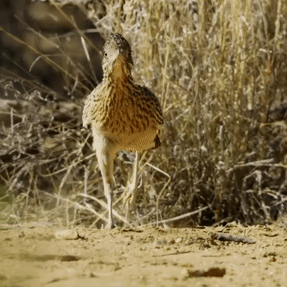


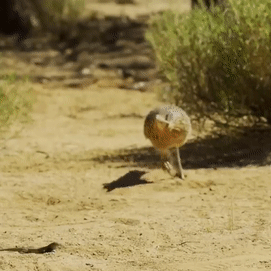
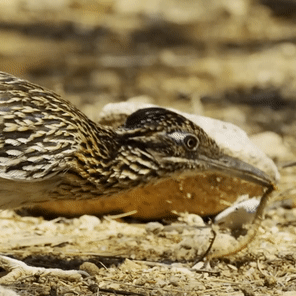
x
#my gifs#stim#bird stim#birdblr#bird#roadrunner#nature#animal#desert#brown#yellow#green#tw animal death#bug#tw bug#singular bird
1K notes
·
View notes
Text


ok heres another oldie because i like them still
#desert duo#grian#grian fanart#goodtimeswithscar#gtws fanart#gtwscar#my art#screachog art#maybe i should bring back green scarf grian i kind of miss him.........#also super fun to see i have definitely improved since (looks at watch) a Year
2K notes
·
View notes
Text

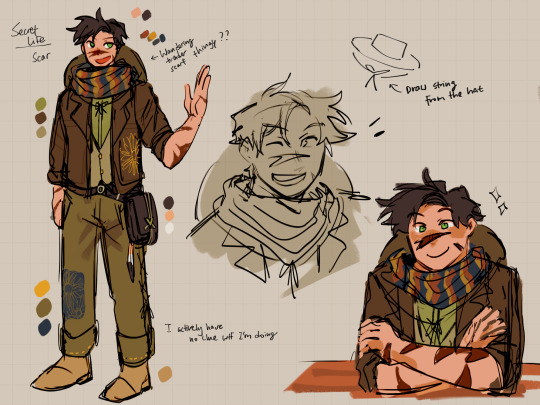
[Day 140]
I tried GAJWHAKWJEHA but I think I am kinda happy with these designs :D
#dddaily4sherin#grian#goodtimeswithscar#desert duo#my art#secret life#secret life fanart#secret life smp#trafficblr#traffic smp#i wanted to make grians second design not color match with scar as much anymore but the green overalls simply looked too good rip LMAOAOAN#color theory doesn't want desertduo apart#designing is so hard though i swear#I certainly tried HEKPJEO i hope these look ok the sillies!!!
805 notes
·
View notes
Text
#biodiversity#conservation#climate adaptation#climate crisis#climate emergency#disaster#deforestation#desertification#desert greening#ecosystem restoration#ecological#food preservation#food security#foodsharing#forests#game preserve#greening#global greening#peace#peacebuilding#reforestation#regeneration#risk reduction#trillion trees#urban greening#palms#vertical farming#water security
1 note
·
View note
Text

hi been noodling with designs for block guys have some sandy boys
#mcyt#grian#goodtimeswithscar#gtwscar#scar goodtimes#desert duo#3rd life#third life#trafficblr#what are. the fandom tags (ekplodes)#dragon doodles#id in alt#remembered I wanted to let myself post more messy things here so here's! design passes I got carried away with#rly liked the idea of scar's palette being dark colors and green and grian's pale color's and red but scar's a red life and grian's a green#complimentary character design when I remember to do you my beloved <3#scar's wheelchair is powered and has treads + a front stabilizing wheel for sand purposes (also I referenced minecart wheels hence. cube)#not something I have much practice in but AM wanting to experiment more with wheelchair designs had lots of fun with this one :]#meant to be making these for a bigger piece but I'm actually procrastinating rn so Not saving these for then I Aim to stop procrastinating
757 notes
·
View notes
Text

okay I refuse to indulge a second longer in this dumbass project, but. do you see the vision.
if gerudo town is to be home of the unpractical heel, why should he be spared.
be a king ganon. lead through example.
#totk#ganondorf#gerudos#shitpost#buliara#I guess she's here too#my art#thanks to buliara for being a good sport#and whoever took the screenshot I then massacred#it's very messy but I wasn't going to fully render This ok#sorry I know he's green even though I'm Against the green but I colorpicked and then didn't adjust and then it was too late :(#very important to know I listened to girlband kpop the entire time I drew this#gerudo town capital of Bad Shoes for the Desert#this is a cry for help nintendo don't you see#(I think he lowkey rocks the look tho......)
437 notes
·
View notes
Text

Sunset in Namibia’s coastal dunes.
© RyanDyar — 2023
#photography#nature#landscape#nature photography#landscape photography#art#curators on tumblr#aesthetic#green#naturecore#namibia#dune#sand dunes#desert#mountain
290 notes
·
View notes
Text

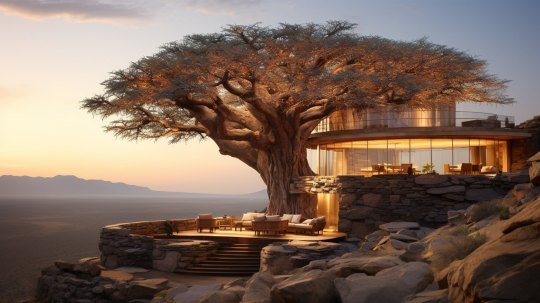
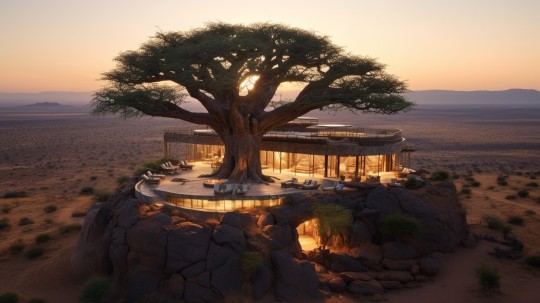




Eternal Tree Villa, Sahara Desert, North Africa,
Green Clay Architecture
#art#design#architecture#luxury pad#luxury lifestyle#ultimate pad#interior design#luxurypad#concept#luxuryhome#luxuryhouse#retreat#desert house#desert#north africa#tree house#green clay architecture#render
329 notes
·
View notes
Photo
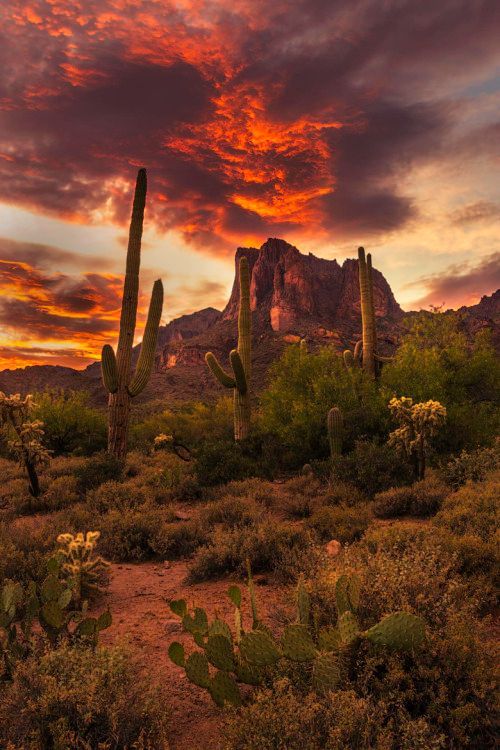
Superstition Mountains, Arizona
#Arizona#travel#Superstition Mountains#desert tones#desert landscapes#saguaro#cactus#rock formations#sky#clouds#sunsets#landscape photography#orange purple green#secondary colors
3K notes
·
View notes
Text









@i6gyu ˂∩)♡ ૮ ꒰ ◜‸ ◝ ꒱ ა ( ˃̣̣̥᷄⌓˂̣̣̥᷅ ) ₍₍ (̨̡ ‾᷄⌂‾᷅)̧̢ ₎₎ (˃᷄ꇴ˂᷅ ૂ๑) (˚ ˃̣̣̥᷄ω˂̣̣̥᷅ ) ( ˃ ⌑ ˂ഃ ) (˃̣̣̣̣̣̣︿˂̣̣̣̣̣̣ ) (。>﹏<。) (´ω`) (•ө•)♡ (๑•̀ㅁ•́๑) (∗˃̶ ᵕ ˂̶∗) ꒰✿´ ꒳ ` ꒱ (。•ㅅ•。)
#rilakkuma#rilakumma#korilakkuma#nippon#nippon stamp#stamps#web graphics#web resources#page decor#da stamps#desert breeze#bunny#deco#aesthetic moodboard#aesthetic moodboards#archive moodboard#beige messy moodboard#beige moodboard#blue moodboard#brown moodboard#clean moodboard#colorful moodboard#coquette moodboard#cute moodboard#cute moodboards#fresh moodboard#green moodboard#indie moodboard#light moodboard#messy moodboard
74 notes
·
View notes
Text

Yeehawgust #10 — neon moon
2K notes
·
View notes
Text

Scarabax
A simple bug from a simple desert.
Source
Creator: FeroxJ
#lego#bionicle#armor#natural armor#animal#animal shape#insect#insectoid#beetle#scarab#scarabax#bara magna#bricks#mandible#green eyes#multiple limbs#multiple legs#eyes#green#desert
125 notes
·
View notes
Text
I can't get the menacing way Scar said "Give up Grian or we'll share you." to Joel during the chase with Scott and I think Martyn in Session 7 out of my head.
Scar is so obsessed with Grian this season. From trying to bring the server against him and the Bad Boys in the beginning. To constantly seeking him out during the AFK session and coaxing him into joining the Family.
He tries to destroy Grians other bonds to get him back on his side. And even during his latest Hermitcraft stream he tries to get Grian back as his ally.
Scar really decided to be the deranged ex-lover this season and is going all out on it.
#desert duo#grian#goodtimeswithscar#limited life#this series has stolen all my brain cells#i can't stop thinking about it#to be fair they all sound absolutely murderous when they chase someone#that joel and martyn chasing scene during the green and yellow period#martyn was so terrifying#rambles
369 notes
·
View notes